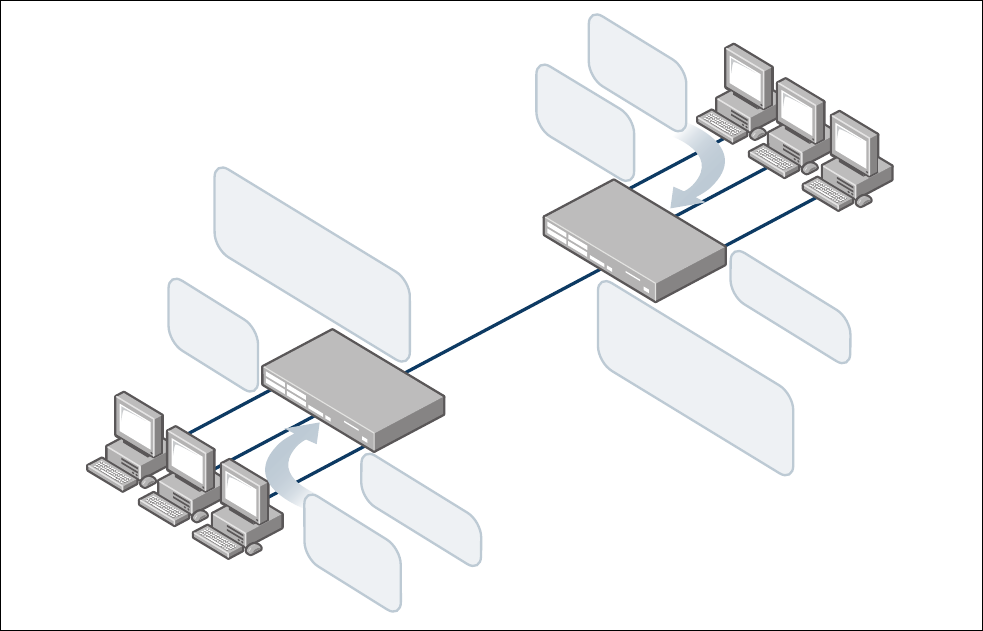
Configure VRF-lite | Page 75
VCStack and VRF-lite
Sharing VRF routing and double tagging on the same port
In this scenario, both VRF-lite traffic and double vlan tagged traffic is transported between
the two x610 switches via a single shared port. The double tagging feature (nested vlans)
makes use of the tag-in-tag technique. The inner tag comes from the end hosts whilst the
outer tag is configured in the x610 switches. VRF-lite traffic remains separated from the
double vlan tagged traffic.
x610 A
192.168.78.2
x610 B
192.168.78.1
192.168.212.2
192.168.211.2
192.168.111.2
192.168.112.2
port20
vlan20 provider port
vlan11 192.168.11.1 vrf red
vlan12 192.168.12.1 vrf green
port5 vlan211
192.168.211.1
vrf red
port5 vlan111
192.168.111.1
vrf red
port12
vlan20 customer port
port12
vlan20 customer port
port6 vlan112
192.168.112.1
vrf green
port6 vlan212
192.168.212.1
vrf green
port20
vlan20 provider port
vlan11 192.168.11.2 vrf red
vlan12 192.168.12.2 vrf green
Communication plan
Host 192.168.111.2 A can communicate with host 192.168.211.2 by VRF red routing.
Host 192.168.112.2 A can communicate with host 192.168.212.2 by VRF green routing.
Host 192.168.78.1 can communicate with host 192.168.78.2 by double tagging. When
Ethernet frames enter the customer edge port, the switch adds an outer vlan tag (VID 20)
on top of the customer inner vlan tag. Ethernet frames can also be sent untagged from
the hosts. The customer VID (inner tag) is ignored whilst the frames are bridged between
the two x610 switches. As Ethernet frames exit the customer edge port of the destination
switch, the outer tag is removed. Therefore, when the packets exit the customer port, the
original VLAN tags (or untagged Ethernet frames) are preserved.


















